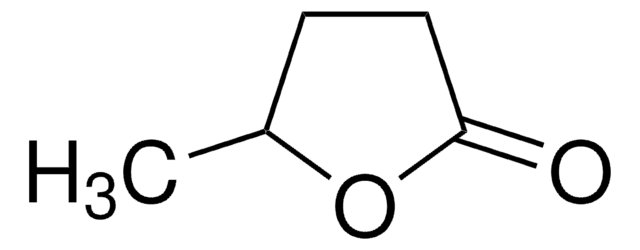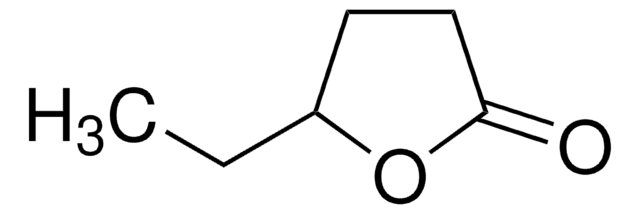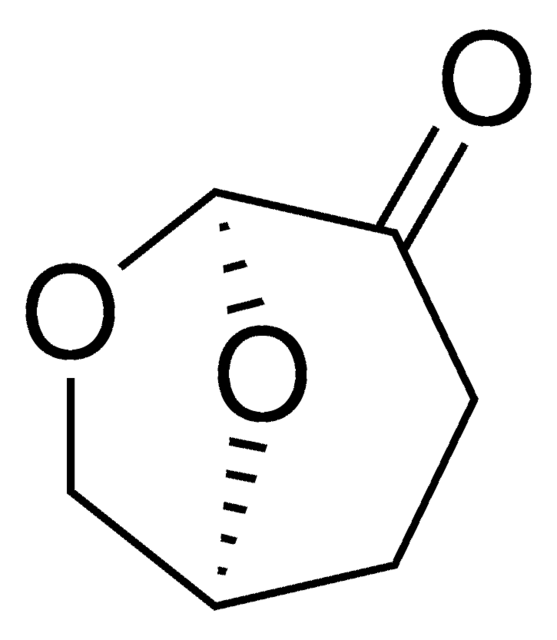Key Documents
W255611
γ-Hexalactone
natural, 97%, FG
Synonim(y):
γ-Caprolactone, γ-Ethyl-γ-butyrolactone
About This Item
Polecane produkty
klasa czystości
FG
Kosher
natural
Poziom jakości
zgodność regionalna
EU Regulation 1334/2008 & 178/2002
FDA 21 CFR 117
Próba
97%
współczynnik refrakcji
n20/D 1.439 (lit.)
tw
219 °C (lit.)
gęstość
1.023 g/mL at 25 °C (lit.)
Zastosowanie
flavors and fragrances
Dokumentacja
see Safety & Documentation for available documents
alergen pokarmowy
no known allergens
Organoleptyczne
creamy; herbaceous; sweet
ciąg SMILES
CCC1CCC(=O)O1
InChI
1S/C6H10O2/c1-2-5-3-4-6(7)8-5/h5H,2-4H2,1H3
Klucz InChI
JBFHTYHTHYHCDJ-UHFFFAOYSA-N
Szukasz podobnych produktów? Odwiedź Przewodnik dotyczący porównywania produktów
Opis ogólny
Zastosowanie
Działania biochem./fizjol.
Hasło ostrzegawcze
Warning
Zwroty wskazujące rodzaj zagrożenia
Zwroty wskazujące środki ostrożności
Klasyfikacja zagrożeń
Eye Irrit. 2
Kod klasy składowania
10 - Combustible liquids
Klasa zagrożenia wodnego (WGK)
WGK 2
Temperatura zapłonu (°F)
208.4 °F - closed cup
Temperatura zapłonu (°C)
98 °C - closed cup
Wybierz jedną z najnowszych wersji:
Masz już ten produkt?
Dokumenty związane z niedawno zakupionymi produktami zostały zamieszczone w Bibliotece dokumentów.
Klienci oglądali również te produkty
Nasz zespół naukowców ma doświadczenie we wszystkich obszarach badań, w tym w naukach przyrodniczych, materiałoznawstwie, syntezie chemicznej, chromatografii, analityce i wielu innych dziedzinach.
Skontaktuj się z zespołem ds. pomocy technicznej












